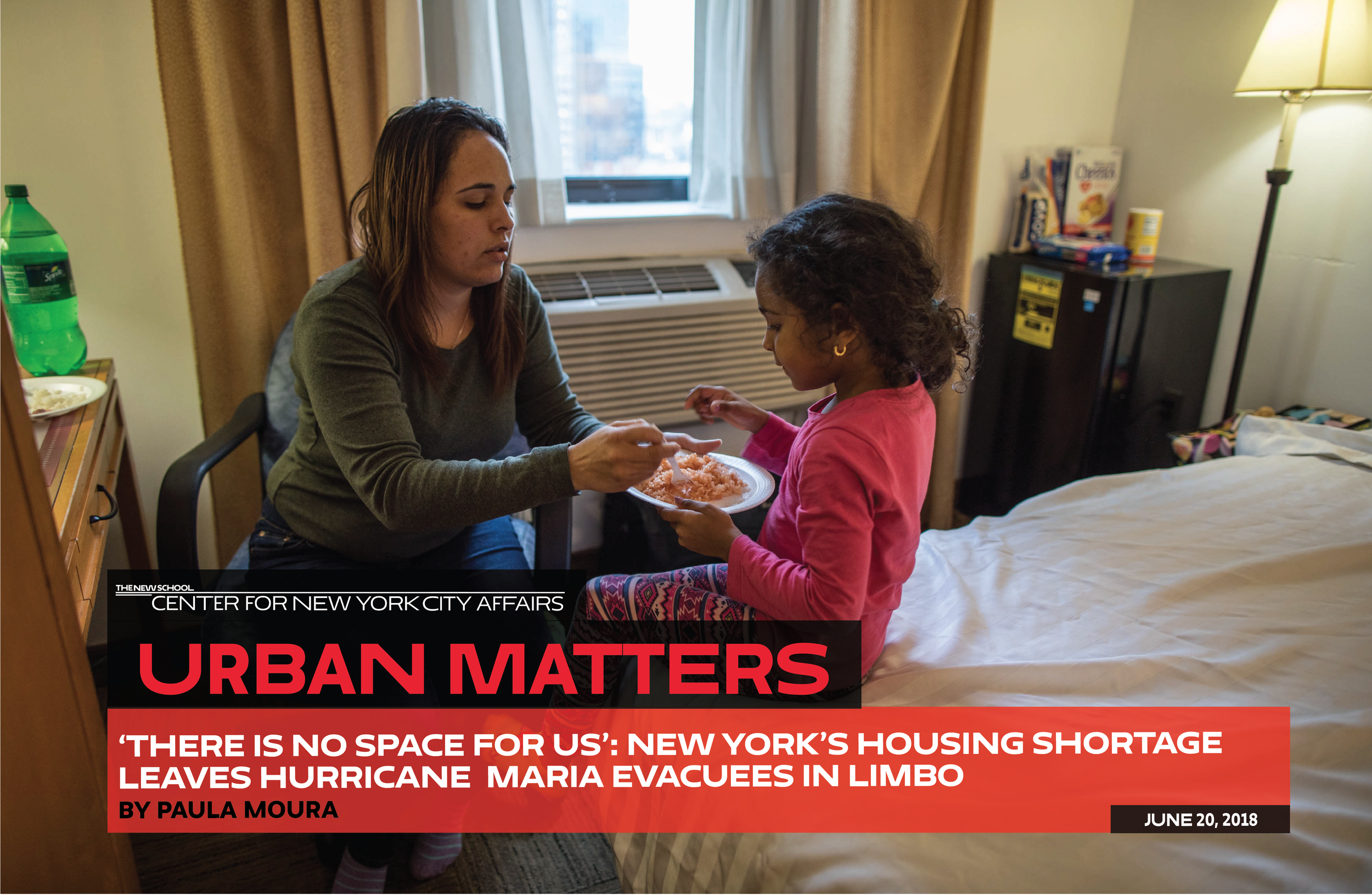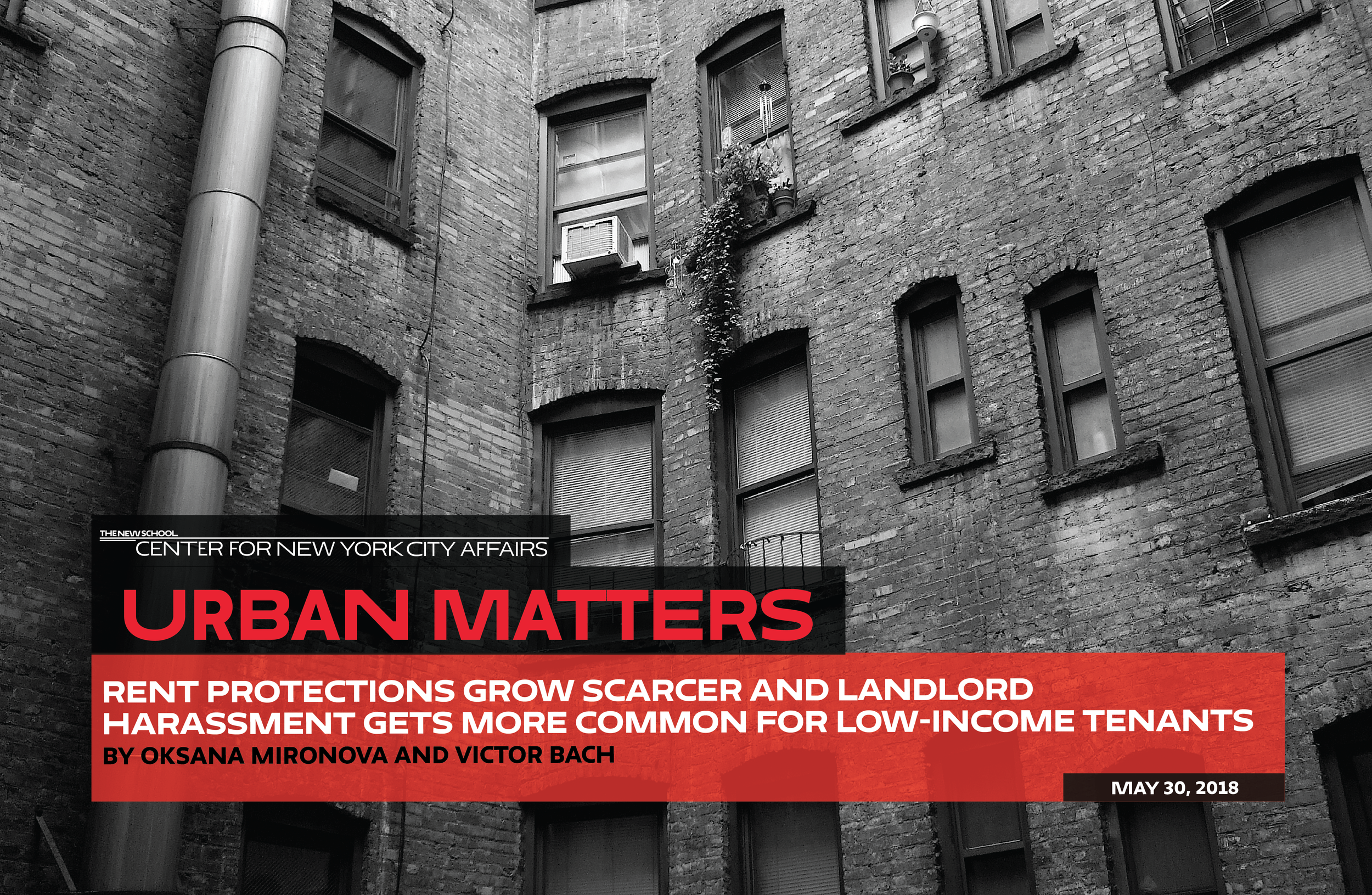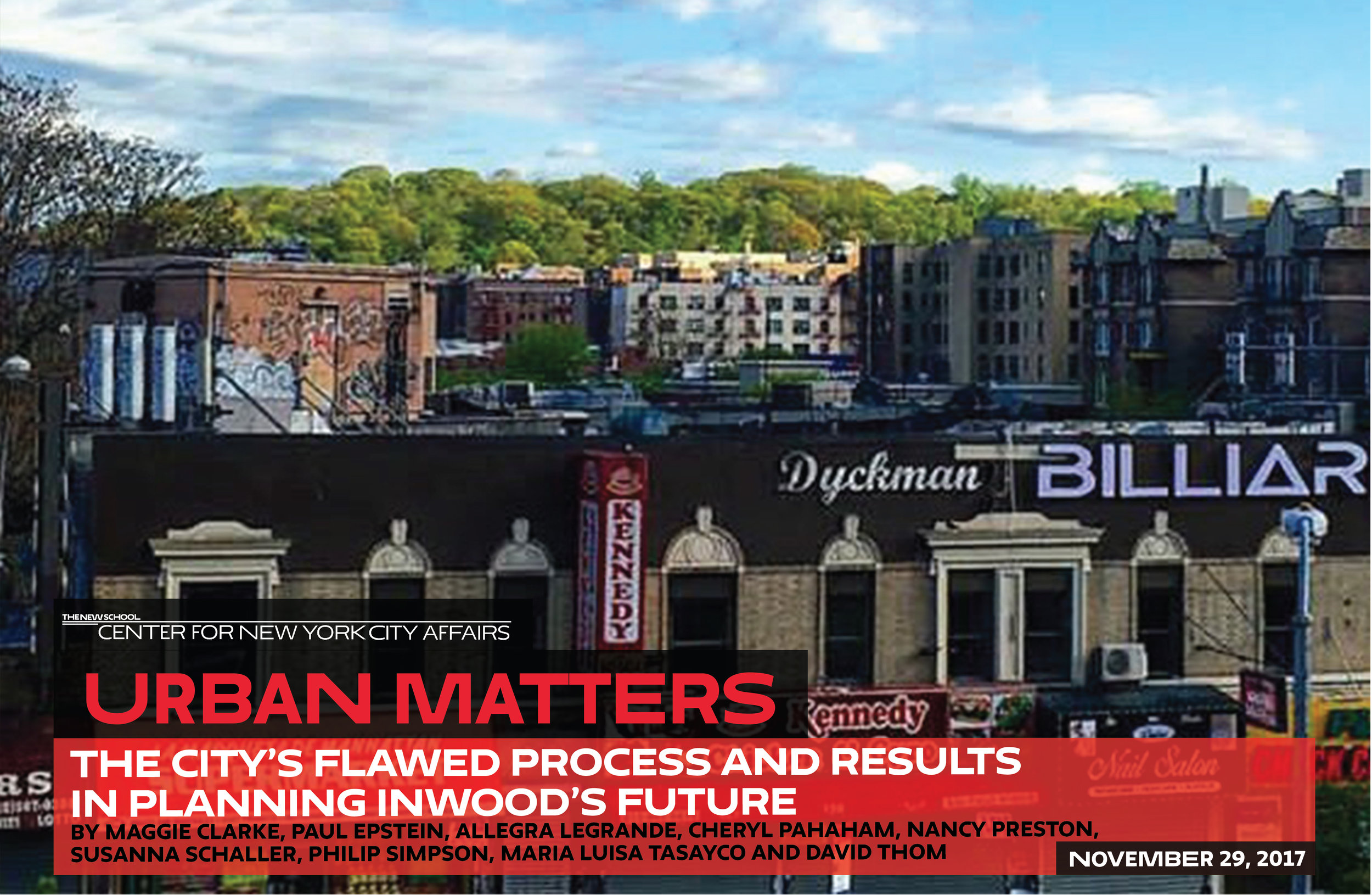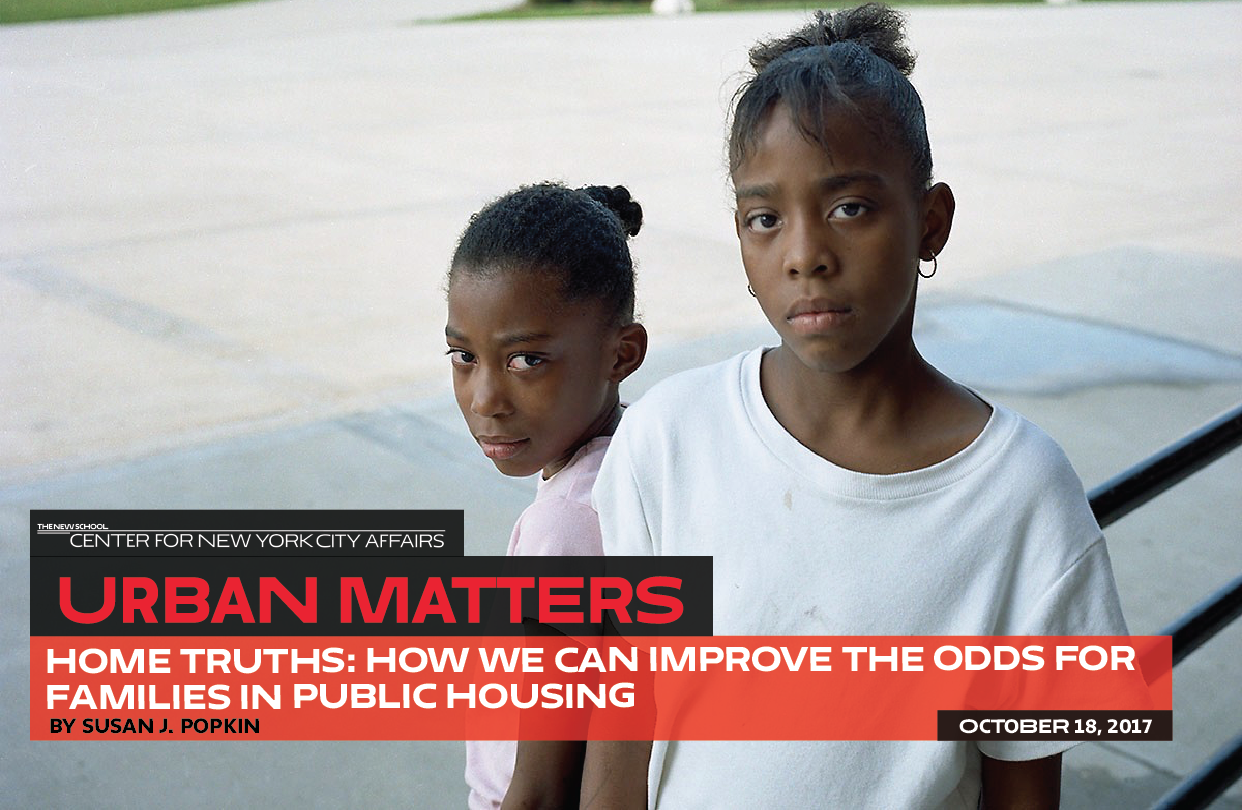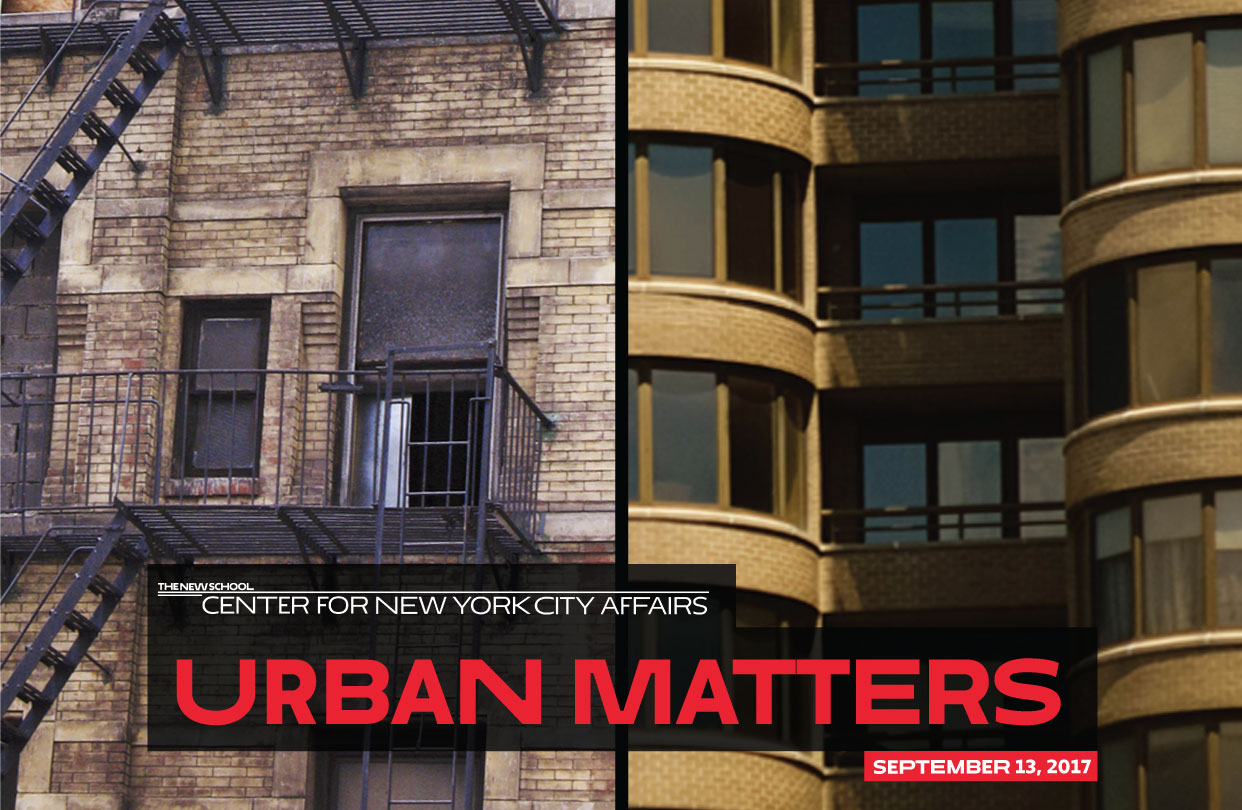High housing costs cast a long shadow over New Yorkers’ daily lives. More than 30% of City residents pay more than half their incomes in rent and median rents are rising faster than incomes. Families caught between high-rents and low-wages are particularly squeezed and the Mayor’s housing plan identifies nearly one million households with extremely low-incomes and fewer than half that number of affordable units. We are looking at the continued loss of low-cost units, how housing demand is changing neighborhoods, strategies to help low-income residents maintain a foothold, as well as considering how the next generation of young people and immigrants can start their dreams here.
Forty Percent of NYC’s Working Families Don’t Make Enough to Afford Basics, a New Study Shows
By Sheena Wright and Merble Reagon
With the cost of living rising at nearly three times the rate of wages, 2.5 million working-age New Yorkers are struggling to provide food, housing, and other basic necessities for their families. United Way of New York City, The Women’s Center for Education and Career Advancement, City Harvest, and The New York Community Trust are proud to release “Overlooked & Undercounted 2019: The Self-Sufficiency Standard for New York City,” a study that determines the amount of income necessary to meet the basic needs of working families without public or private assistance.
Urban Matters
Public Housing And Asthma: Another Winter Of Discontent, Or Relief At Last?
By Kristen Lewis, Sarah Burd-Sharps, and Bruce Cory
The New York City Department of Health tracks and analyzes avoidable asthma hospitalization rates for adults—i.e., those that could have been prevented by quality outpatient care. A map of preventable asthma hospitalizations makes evident a connection between them and the amount of public housing in a neighborhood. Residents in neighborhoods with high rates of avoidable asthma hospitalizations and high concentrations of public housing— mainly in the South Bronx and central Brooklyn—are also more likely to report fair-to-poor housing conditions.
Urban Matters
‘There Is No Space for Us’: New York’s Housing Shortage Leaves Hurricane Evacuees in Limbo
By Paula Moura
The terrifying message came via a robo-call on April 20.
“Pack your things. Your stay is not the Federal Emergency Management Agency’s (FEMA’s) responsibility anymore,” Andrea Tejeda, 26, recalls hearing on her cellphone. She was one of a dozen Puerto Rican families dislocated by last September’s devastating Hurricane Maria staying in a hotel on West 38th Street in Manhattan.
Urban Matters
Rent Protections Grow Scarcer and Landlord Harassment Gets More Common for Low-Income Tenants
By Oksana Mironova and Victor Bach
Since the turn of the century, there has been a tectonic shift in the type of housing low-income New Yorkers live in. While most still live in rent-regulated rentals that number is dropping significantly. At the same time, tenants in both rent-regulated and unregulated housing report increased harassment by their landlords – with the likely goal of driving tenants out so they can raise apartment rents.
Urban Matters
Where Everybody Knows Your Name: How A Community Saved A Beloved Watering Hole
By Robert W. Snyder
New York-Presbyterian, a world-renowned hospital, research center and medical school, is also a landlord in Northern Manhattan’s Washington Heights. Recently, it hit one of its commercial tenants – Coogan’s, a neighborhood restaurant and bar – with a rent hike that the owners said would force Coogan’s to close. Then the community rallied to Coogan’s side – and persuaded the hospital to relent. Here’s the backstory, and its larger implications.
Pushed Out: Countering Housing Displacement in an Unaffordable Region
By Pierina Ana Sanchez, Moses Gates, and Sarah Serpas
In New York City’s tristate metro region, more than one million low- to moderate-income households, 70% of them Black or Hispanic, are vulnerable to displacement. As the Regional Plan Association’s recent report on this crisis shows, those most at risk live in pedestrian-friendly urban communities with good access to jobs and services. As demand pushes rents and sale prices in such areas upward, lower-income households are pushed outward. There is a clear link between increasing rents, displacement, and homelessness. In New York City, a 5% rent increase has been associated with an additional 3,000 residents becoming homeless.
Urban Matters
The City’s Flawed Process and Results In Planning Inwood’s Future
By Maggie Clarke, Paul Epstein, Allegra LeGrande, Cheryl Pahaham, Nancy Preston, Susanna Schaller, Philip Simpson, Maria Luisa Tasayco and David Thom
Bill de Blasio just became the first Democrat re-elected Mayor of New York City in 32 years. His first term was marked by new, progressive policies promising to make our city more equitable, including Universal Pre-K and more broadly available sick leave for many thousands more workers. But everyday New Yorkers across the city also oppose the Mayor’s housing and land use policies. Nor is his administration listening to the people who have the most to lose from rezonings integral to those policies – including the rezoning of our neighborhood, Inwood.
Events
Tale of Two Cities: Public Housing and Family Poverty in New York and Chicago
Chicago tore down its high-rises, but what did the city do to build up the people who lived there? The New York City Housing Authority has done better than most in providing decent, affordable homes, yet many residents live in deep poverty. Join us for a discussion about public housing and the needs of resident families and children. Panelists will discuss the structural challenges of inequality and racial segregation that continue to isolate public housing communities and efforts to connect residents to opportunity.
Urban Matters
Home Truths: How We Can Improve The Odds For Families in Public Housing
By Susan J. Popkin
For more than 40 years, Chicago’s enormous public housing high-rises dominated the city’s poorest African-American neighborhoods, bringing crime and drug trafficking and blighting the lives of the families that lived in them. But 15 years ago, the City of Chicago began a remarkable odyssey that would help the Chicago Housing Authority (CHA) evolve from the most dysfunctional public landlord in America to the ordinary city bureaucracy it is today.
Reprinted By: Permission of Rowman & Littlefield Publishers
Urban Matters
If At First You Don't Rezone...
By Flávia Leite
The New York City Council recently approved by a vote of 43-0 the de Blasio Administration’s East Midtown rezoning plan. It marked the final step in a torturous journey begun when, in the waning days of his mayoralty four years ago, Mayor Michael Bloomberg put forward, then withdrew for lack of political support, an earlier rezoning plan intended to modernize a 73-block business district anchored by Grand Central Station.
Urban Matters
A Tax Rx for New York City: Make Property Taxes Fair for All
By James Parrott, Ph.D.
Now that Senator Chuck Schumer helped the White House engineer legislation to lift the federal debt ceiling and fund the federal government until December, much more attention in Washington will shift to tax reform. In New York City, unfortunately, no one expects much to happen soon on local tax reform – a pity, given how a highly regressive property tax system imposes a deeply unfair tax burden on low-income households.
Urban Matters
Blasio’s Homeless Plan Won’t ‘Turn the Tide’
By Ellen L. Bassuk, MD
Family homelessness in New York City has reached staggering proportions, with the average length of stay in family shelters exceeding 400 days. Given this context, we have concluded that Mayor Bill de Blasio’s new plan, “Turning the Tide on Homelessness in New York City,” will not succeed.
Urban Matters
'We Moved So Many Times I Didn't Think It Was Strange'
By Hoa K. Vu
Roughly one out of eight New York City public school students has been homeless sometime during the past five years, according to a recent estimate by the Institute for Children, Poverty, and Homelessness. With family homelessness remaining at record levels, tens of thousands of children are growing up in shelters. In her own words, one tells her story.
READ MORE
Urban Matters | Children, Youth, and Families,
Ending Family Homeless Shelters As We Know Them (2016)
By Ralph Nunez, PhD
Earlier this month, New York City Mayor Bill de Blasio ordered a restructuring of how the nation’s largest city serves its most impoverished citizens: the homeless.
With the city’s homeless population at a near-record high of almost 58,000 people – including, distressingly, almost 23,000 children – the mayor is absolutely right about the need for fresh thinking in meeting this challenge. Such reforms must go beyond this latest administrative reorganization. And the first thing that must change is the concept of the homeless shelter itself.
Urban Matters | Children, Youth, and Families
When The Face Of Homelessness Is A Baby's Face (2016)
By Kendra Hurley
When we talk about homelessness, the conversation typically—and understandably—focuses on families’ most pressing needs: affordable housing; jobs that pay a living wage; and subsidized child care so that parents can work and families can find a way out of the shelters and into permanent homes.
To talk about anything else is, to some extent, talking about a Band-Aid solution to a deep social and economic problem. The reality, however, is that homeless families today spend an average of more than 400 days living in New York City shelters.
Urban Matters
Cutting Rents Without Bleeding Landlords
By Flavia Leite, Courtney Loiacono, Grant Nagaki, and Dan Wooldridge
Mayor Bill de Blasio’s 10-year affordable housing plan paints a stark picture of nearly one million low-income households competing for fewer than half that number of affordable housing units. That’s why we propose decreasing, not just freezing, what the hardest-pressed tenants pay – without penalizing their landlords.
Urban Matters
The Pitfalls in de Blasio's Affordable Housing Plan and How to Avoid Them
By Ronald Shiffman
In creating affordable housing, New York City government is dependent on its own revenues, its ability to leverage private financial resources, and the limited powers that State government grants it. Zoning is one of those powers. That’s why the administration of Mayor Bill de Blasio is pursuing a policy of “mandatory inclusionary zoning.” It requires that in particular areas developers set aside fixed percentages of proposed residential units for low- and moderate-income families.
Urban Matters
Another Reason to Make Rents More Affordable:
It Could Be Good for Your Health (2015)
By Rachel Meltzer and Alex Schwartz
Blood poisoning from peeling lead paint and leaking gas pipes; asthma and other diseases aggravated by inadequate heating and insulation; injuries and fatalities from falls or fires in unsafe and derelict buildings; researchers and reformers have long raised alarms about the serious health hazards associated with substandard or badly maintained housing.
Now our newly published research suggests that another factor – the high cost of housing – may be just as bad for many New Yorkers’ health as these physical perils. In some cases, unsustainable rent burdens may in fact be even more detrimental.
Event
Affordable Housing: Rent and Reality (2015)
Mayor de Blasio’s ambitious affordable housing agenda is at the heart of his administration’s pledge to start a new chapter in “a tale of two cities.” In 2015, Albany serves as the rent-regulation battleground but the true impact of this fight will be felt in the five boroughs where more than 2.3 million people live in rent-regulated housing. While proposals to construct new affordable housing continue to garner the most media attention, the mayor’s State of the City address revealed just how dependent his strategy is on preserving the affordability of existing units. What does the battle over rent regulation in the state capital portend for turning de Blasio’s vision into reality?
Report & Event | Homelessness, Mental Health
In Need of Shelter:
Protecting the City's Youngest Children from the Traumas of Homelessness (2015)
Of the over 20,000 children in homeless shelters, nearly half are under 6 years old. We know from research how crucial the early years are to lifelong development. Yet families now stay an average of over 400 days in city shelters—an eternity for a small child.
The new Child Welfare Watch report describes the stresses that homelessness puts on families with young children, and explores the discontinuity between the large number of young children in the shelter system and the dearth of services available to them. It reveals that currently the most common way for a family in a shelter to receive support for young children is to become known to child welfare authorities—a help that often goes hand-in-hand with the fear that children will be removed to foster care.
Event | Affordable Housing
The Mayoral Agenda: Affordable Housing and Historic Preservation (2014)
Historic Districts Council and the Greenwich Village Society for Historic Preservation are working together to present a panel discussion about affordable housing and historic preservation. With the mayor's plans for affordable housing given such a focus as well as the multitude of articles written about these two topics together, we thought that it was an appropriate time for public discussion about it. The program will feature a mix of community and affordable housing advocates, civic leaders and preservationists.
Hon. Gale Brewer, Manhattan Borough President
Harvey Epstein, project director, Community Development Project, Urban Justice Center; NYC Rent Guidelines Board Member
Nadine Maleh, director, Inspiring Places program at Community Solutions
Rachel Meltzer, assistant professor of urban policy, The New School
Rosie Mendez, member, New York City Council, District 2 (Lower East Side)
Moderated by Andrew Berman, executive director, Greenwich Village Society for Historic Preservation
Event | Affordable Housing
The Future of Public Housing in for New York City:
What Washington's new vision means for New York City (2013)
The New York City Housing Authority manages 178,000 apartments with more than 420,000 official residents, and by most accounts a budget that's inadequate to the essential tasks of operation and upkeep. The federal government is moving steadily away from permanent housing supports to new models. What's Washington's vision, and how does it affect New York, where public housing has long provided residential stability for families and economic vitality for neighborhood businesses? What are the likely trade-offs of NYCHA's recent proposal to overcome budget shortfalls by spurring development on open spaces in public housing developments?
David Gilmore, HUD-appointed administrative receiver, Housing Authority of New Orleans
Rosie Mendez, member, New York City Council, District 2 (Lower East Side)
Damaris Reyes, executive director, Good Old Lower East Side; tenant advocate, Baruch Houses Tenant Association
Julia Vitullo-Martin, senior fellow, Regional Plan Association; director, Center for Urban Innovation
Emily Youssouf, vice-chair, New York City Housing Authority
Moderated by Errol Louis, NY1 News



